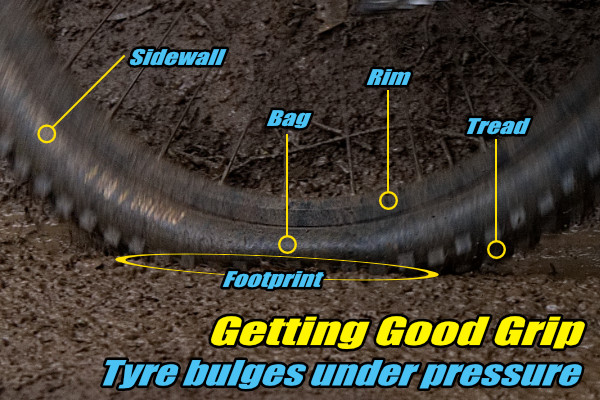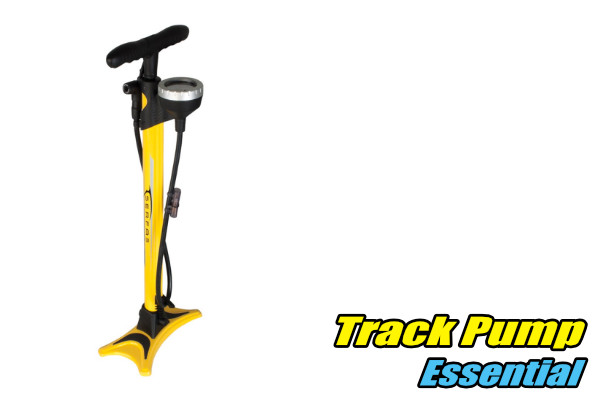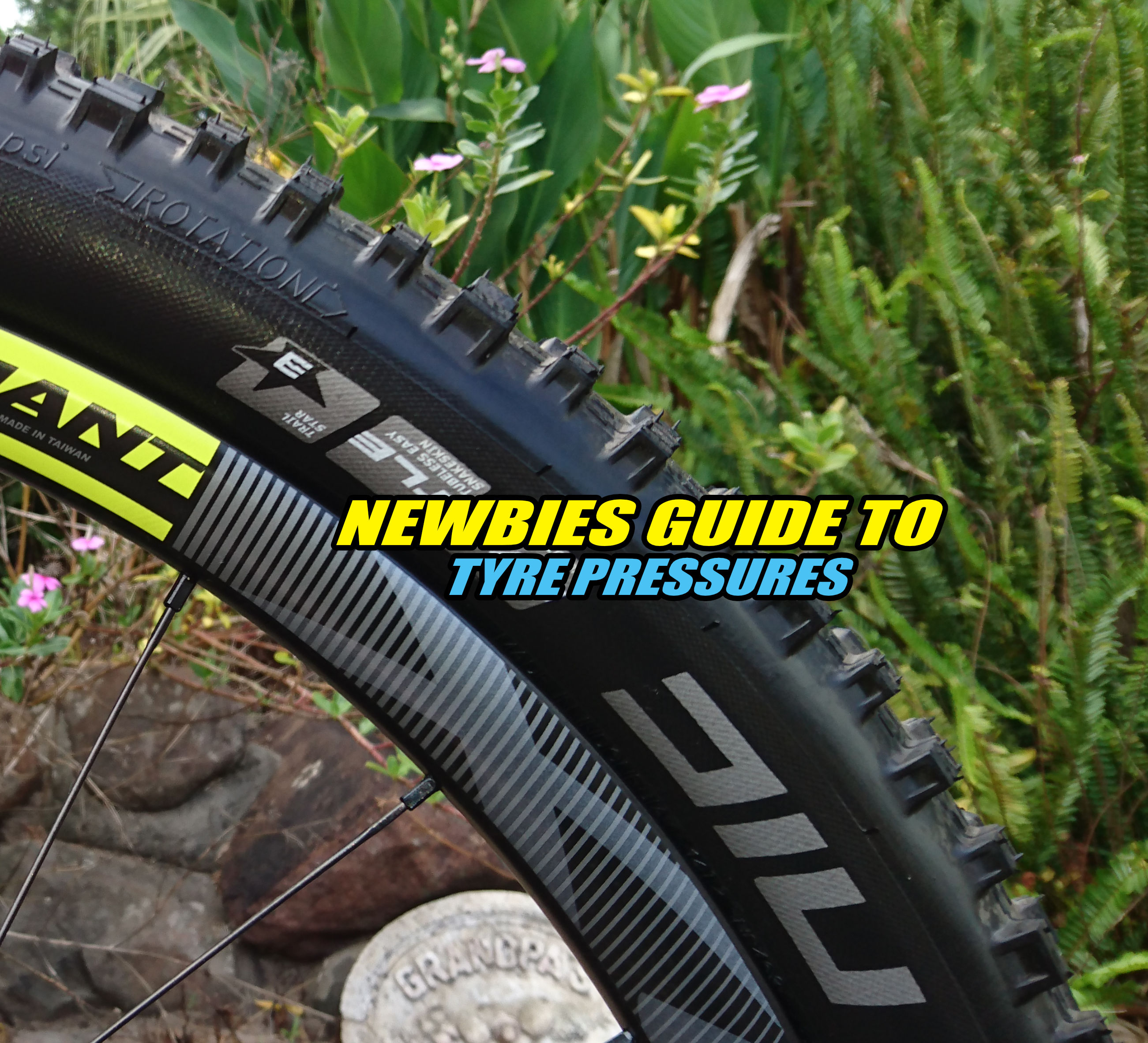Here’s another subject that most new riders to MTB have little idea about. We see them turn up to our coaching sessions and social rides with tyre pressures that are definitely having a negative effect on their riding. In this article we want to try to give newbies and anyone else who is struggling to choose the right tyre pressure, a clue on where to start. At the end we’ll even help you choose a pressure to suit you personally.
Does tyre pressure really matter?
Yep. Tyre pressure is important because it shapes your tyre and provides what we call the “footprint”. The footprint is the part of the tyre that is in contact with the ground at any moment in time. Aside from the actual tread pattern, your tyre grip level is governed by tyre pressure which also holds the tyre onto your wheel rim and can even have an effect on puncture resistance. Your tyre footprint is more when the pressure is low. This is because the weight of the rider and bike together squashes the tyre out where it meets the dirt. Obviously, when the pressure is high, the tyre footprint is smaller as the pressure doesn’t allow the tyre to be squashed as much.
High pressure vs low Pressure
Too much pressure and you have a harsh ride that doesn’t grip well in most terrains and soil types. Although, you’ll have more resistance to impact punctures from objects, you’ll also be more prone to punctures from very sharp objects due to the stretch of your tube and tyre. Think about how a balloon is easier to pop when it’s highly inflated. Also, due to the high pressure, the side walls (the bit between the knobs and the wheel rim) is susceptible to be cut by sharp objects like some rocks. One advantage is the tyre will roll faster due to less less rubber in contact with the ground providing less resistance.
Too low in pressure and your bike will feel squirmy. Rocks and roots will slam the tyre against the wheel rim, possibly causing damage and your tube may be punctured by sneaking between the tyre and rim. This is called a “snake bite” (leaves two holes in the tube) or a “pinch” flat. If you have a tubeless setup then “burping” can occur where the low pressure allows the tyre to roll slightly off the wheel rim when cornering or when you hit something and causes air loss. The squashed part of the tyre that sticks out to the sides is often called “bag” and may also be susceptible to being cut by sharp rocks.
In the end then, you are looking for a tyre pressure that is a compromise for all the elements involved. Let’s look at more of those elements.
Your body weight and tyre pressure
In general terms, the heavier you are, the more tyre pressure you may need to run in your tyres. This is because you are going to add more to the downward pressure on the tyres than a lighter person. More pressure will help to control that squash we mentioned earlier and provide a good footprint and therefore grip. As an example, a 120kg person may need 40 psi in their tyres while a 60 kg person riding in the same terrain may only need 20 psi.

Front tyre vs rear tyre pressure
When we are sitting on our bikes and just riding long, our weight is distributed more to the rear of the bike than the front. For this reason, most riders will have more air pressure in their rear tyre than their front tyre. It may be only a couple of psi variation between them but it makes a difference to how each tyre performs.
Hardtail vs full suspension bike pressures
Because a full suspension bike has plenty of give in the rear end, it’s possible to run slightly lower pressure in the rear tyre than you might on a hardtail (only front suspension) if you had one. When bumps slam into the rear tyre, the rear suspension allows the wheel to move up and absorb the impact. This doesn’t happen on a hardtail obviously. A good hardtail rider though learns to be very efficient at moving their body and lifting their rear wheel to avoid large impacts making it possible for them, at least, to run lower pressures than a less skilled rider.
Tyre size vs tyre pressure
Although in most cases you can’t change the outside diameter of the tyres you use, you can choose a variety of tyre widths. The wider tyres have more footprint and the extra width means more air volume in the tyre or tube. More volume allows for the possibility of using lower pressures and a softer ride. The downside is wider tyres are heavier than their narrower counterparts.
Different pressures for different terrains
Even when you have sorted out your “go to” tyre pressures (more on that below), there may be some places you ride where changing the pressure is an advantage. In the extremes, think about riding on sandy trails near a beach on one hand and then along bitumen bike paths on the other hand. Having low pressures on the bitumen won’t help much with grip because rubber holds bitumen well anyhow. However, the low pressure will create more resistance from the tyre (called rolling resistance) than if you ran higher pressures. On the beach trails though, the lower pressure allows for the a bigger footprint and a better chance of the tyre rolling over the sand instead digging in and creating so much resistance you can’t even pedal against it.
Riding style vs tyre pressure
The way a rider rides can also have a bearing on tyre pressures. Higher pressure can seem ok until you find yourself riding faster and suddenly you seem to have less grip and bumps, rocks and roots seem to slam into the bike a lot more. On the other side of the coin, running lower pressures might seem fine at first, but as you get faster you find that the bike feeling squirmy in the turns maybe.
Too much to take in? How to find your “go to” tyre pressures.
As a newbie, you just need tyre pressures that will grip in most situations, be as puncture resistant as possible and comfortable to ride. And all said and done, let your body weight be your guide to this. Below we have a list to give you a starting point. Simply find your weight range and the closest tyre size (it’s written on your tyre side wall) and start there. If you don’t have one, purchase a good bike track (floor) pump with gauge when you are able.
TYRE PRESSURE GUIDE FOR BEGINNERS (pressures in psi, average of both tyres)
Note: On tubeless setups you may be able to minus around 2-4 psi.
Note 2: It’s common to run 1-2 psi less air pressure in front tyres than rear tyres.
Note 3: Pump gauges are rarely perfectly accurate and should used as a guide only.
[wp_table id=4690/]
Please note
- These are just recommendations for you to start with if you have no idea what pressures to run. Test carefully and adjust pressures to suit your own riding style, tyre choices and terrains.
- Tyre manufacturers often put their highest and lowest pressure recommendations on the tyre side walls. We can not recommend you using pressures lower than suggested by the tyre manufacturer.
- As an example of experiment, the author, at 100+ kgs finds the combination of his full suspension bike, heavy tyres and riding style allows him to run around 27 psi rear and 25 psi front without issue for most terrains. However, for city bike paths I run around 40 – 45 psi.
- Air escapes through rubber. That’s right, the air molecules can actually pass through rubber and escape. This is called permeation and is why you need to keep checking your tyres (be it bike or car) for pressure regularly. On a car, once a month or so is usually fine, but on a bike we check ours every day or so.
Hope that helps.


